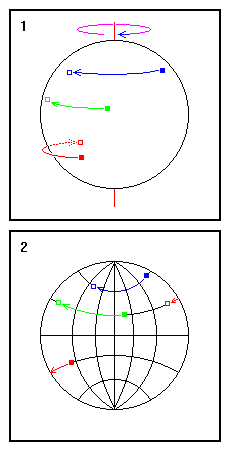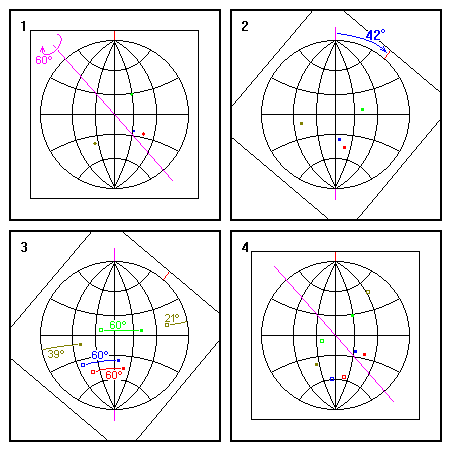Rotate Points Around a Horizontal Axis
Steven Dutch, Professor Emeritus, Natural and Applied Sciences, University of Wisconsin - Green Bay
Basic Principle
 |
1. When a sphere rotates, points on the sphere appear to move along small circles centered on the rotation axis. Some points may move around to the back side of the sphere (red) 2. Therefore, the way to rotate points around a horizontal axis on any spherical projection is to move the points along the small circles. Move the point by the desired amount along whichever small circle it lies on. If the rotation carries the point outside the primitive circle: In mineralogy, start counting back in along the same small circle until the desired rotation angle is counted off, then plot the point using a symbol to show the point is on the far side of the sphere. In structural geology (the convention shown here), move to the diametrically opposite side of the primitive circle and continue counting in on the appropriate small circle. It will have the same latitude but opposite hemisphere as the circle the point was originally on. |
Example
 |
1. Rotate the points around the purple horizontal axis as shown.
2. Rotate the overlay so the rotation axis is north-south. 3. Count off the desired rotation along the small circles corresponding to each point. Rotated points are shown as open squares. 4. Return the overlay to its original position. |
It can be difficult to keep track of the sense of rotation. It may help to mark an arrow on the net to show the rotation direction. Be sure to rotate all points in the same sense.
Return to Course Syllabus
Return to Techniques Manual Index
Return to Professor Dutch's Home Page
Created 11 September 2000, Last Update 11 September 2000